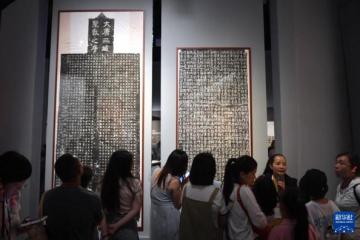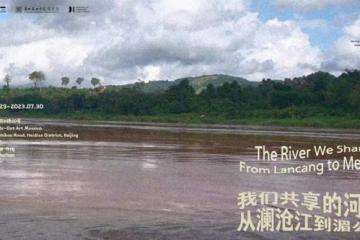“盒内思考”是否是促进可持续发展的一味灵丹妙药?
发布时间:2018-02-24 13:06 来源:互联网新闻 编辑:竹隐 阅读量:11515
Does thinking ‘inside the box’ offer the key to improving sustainability?
“盒内思考”是否是促进可持续发展的一味灵丹妙药?
我们Anthesis一直致力寻求与我们志同道合的组织机构合作,从而帮助我们的客户实现可持续发展计划。前不久,机缘巧合之下我们结识了创新专家——SIT(Systematic Inventive Thinking系统创新思维)公司。SIT独特的创新方法论聚焦于“盒内思考”,也就是在现有资源的限制框架之下,更好地利用现有的资源,来找到真正变革、有效的创新想法。这对于任何一位从事可持续发展领域的人士来说都是一个极好的消息!在这篇文章中,来自英国SIT的Carey Conway将会同大家一起探索我们天生的认知“思维定势”是如何限制我们,让我们无法发挥现有资源的更多作用。
Have you ever wondered why men and women’s shirts button-up on different sides? The general belief is that this dates back to mid-Victorian times when women within wealthy families had maids to dress them and, as most maids would have been right handed, it was easier for them if the buttons were on the left hand side of garments. Any lady wearing clothing that buttoned on the left would be presumed wealthy; this became fashionable for obvious reasons and over time was adopted more widely, until eventually all ladies buttoned clothes came to follow this design.
你是否有思考过为什么男士衬衫同女式衬衫纽扣排列的位置是相反的?对此,公认的解释是:这一情况最早起源于维多利亚时代中期,那时候家境富裕的女性都有女仆服侍穿衣。由于大多数的女仆都习惯用右手,如果纽扣的位置位于衣物的左边,对她们来说会更加方便。女士们穿着纽扣位于左边的服装便被认为是一种富有的象征。也正因如此,这种类型的设计成为了潮流,被广泛采用,最终所有的女士有扣服饰都采取了同样的设计。
An interesting story perhaps; but isn’t the more perplexing question, why have we been willing to put up with the extra burden from a manufacturing and design detail perspective for over 150 years, and long after the practice of dressing by maids ceased? Odd? Not really. As the fields of behavioural psychology and neuroscience progress apace, we are all becoming increasingly aware of what complicated creatures humans are. We are subject to all sorts of cognitive biases that drive our behaviour (Wikipedia lists well over 150 types at the last count!).
这或许是一个有趣的故事,但同时也是一个十分令人费解的问题:女佣侍衣这一现象消失已久。站在制造和设计细节的角度,这种纽扣设计无疑是额外的负担,但为什么我们对此却一直容忍长达150年呢?这样的事发生很奇怪么?并不是。随着行为心理学以及神经科学的快速发展,人们越来越意识到人类是一种多么复杂的生物。各种各样的认知偏好都会支配我们的行为(仅维基百科上就列有超过150种认知偏好!)。
Some of these are extremely helpful in aiding survival and providing us with the mental shortcuts required to make rapid judgements and to take decisions – acting on ‘instinct’, one might say. Essentially, for reasons of efficiency, we are ‘wired’ to recognise and reapply patterns that have worked in our past (a simple example would be ‘automatically’ hitting our brakes when we see brake lights come on in the car in front of us).
有些认知偏好对于生存以及快速判断并作出决定是极有帮助的,也可以说是基于“直觉”的行动。本质上,出于效率的原因,我们天生就具备识别那些过去曾经奏效的模式并且再次套用的能力(一个很简单的例子就是,当我们看到前面的车辆亮起刹车灯的时候,我们会不假思索地踩下刹车)。
Unfortunately, like any strength, our biases are also at times a weakness as they have a limiting effect on our ability to behave rationally and logically, even when evidence to do so is in plain sight; hence the button story. Karl Dunker first identified the cognitive bias Functional Fixedness in the 1930s, defining it as a ‘mental block against using an object in a new way that is required to solve a problem’.
遗憾的是,就像其他任何力量一样,认知偏好有时也是一个弱点,让我们无法理性地、有逻辑地行动,即便这样做的好处是一目了然的。因此就有了关于纽扣的故事。在1930年,Karl Dunker首先识别出认知偏好——功能性思维定势,并将其定义为一种“让我们无法用新方式来利用物体去解决问题的思维障碍“。
Another bias, Structural Fixedness, identified by the Gestalt School of Psychology around the same time, describes our difficultly in seeing an object as anything other than its overall shape or form. For example, it is easier for us to see a candle as a candle, rather than some wax which can be either liquid or solid and some interwoven fibrous strands twisted into a wick.
另一种认知偏好叫做结构性思维定势,在同一时期,由Gestalt心理学流派提出的。他们将其定义为:人们倾向于将一个事物看成一个完整的整体,而不是其他的东西。例如,当我们看到蜡烛的时候,我们更倾向于把它看成一个蜡烛整体,而不是可以随意变成固态或者液态的蜡以及由一些互相交织的纤维束扭成的灯芯。
However, once we see objects as individual components, it becomes much easier to imagine new uses for each component, doesn’t it?
然而,一旦我们将一个物体看作一个个单独的组成部分,想象每一个组成部分可以起到的新作用就变得更加容易了,不是么?
Upon first blush, these may not seem significant psychological or neurological discoveries, yet, throughout time, much has been lost because of humans’ failure to break their fixedness. Take the Titanic for example; given it took several hours for the boat to fully sink, how differently might things have turned out if the numerous objects on board that floated had been seen as potential lifesavers, in addition to the designated lifeboats? And what about the iceberg itself? What creative solutions could have been found quickly by ‘thinking inside the box’?
乍一看这些发现看起来并非心理学或是神经学上的巨大的突破,但是纵观历史,由于无法打破这些思维定势,人们已经失去了很多本可能的机会。以泰坦尼克号为例。在船上,除了救生艇之外,还有有大量可以漂浮的物体。由于船从受到撞击到沉没需要经历几个小时,如果这些物体都被视作除了专用救生船之外的救生物品,结果是否会完全不一样呢?还有冰山,它也能被利用进行救生吗?通过“盒内思考”,我们还能够快速地找到哪些解决方案呢?
Historically in more affluent societies, fixedness has not been much of a barrier overall – we have simply tended to waste resources, or to jettison them when they are no longer needed for their original purpose.
历史上,在那些更富裕的社会里,思维定势总体上对人们来说并不是很大的阻碍——我们只是倾向于浪费资源,或者,当它们无法继续承担原有功能的时候直接抛弃。
There is now a more than convincing body of evidence proving that, to live sustainably, the human race must not continue to simply follow the patterns learned over the last three centuries.
目前已经有充分的有力证据证明,要想保证可持续的生存,人类决不能够再延续过去三个世纪的生活模式了。
As we embrace the notion of the Circular Economy, individuals, communities, mankind as a whole, have to learn how to behave sustainably, i.e. to use less of our limited material resources and harness more of the limitless ones.
随着我们对“循环经济“的倡导,个人、社群以及整个人类,都需要学习如何什么样的行为才是符合可持续发展的,例如:更少地使用有限的物质资源并且更多地利用无限的资源。
Wouldn’t it help speed up our progress towards this new end state if we better understood the particular biases that hinder us from finding genuinely creative and innovative solutions, and embraced these to help us learn to think and act differently to the past. At SIT, we call this ‘breaking fixedness’. Perhaps we need to learn a thing or two from asset-poor societies (or indeed young children), where finding creative uses for what is already available within the constraints that exist comes more easily.
假如我们能更充分了解这些认知偏好,明白它们是如何阻碍我们找到真正有创意的创新解决方案,并且由此出发,帮助我们用不同以往的方式思考和行动,那不正是在帮助我们加速达成可持续发展这一状态吗?在SIT,我们称之为“打破思维定势”。也许我们需要向资源贫乏的社会(或者孩子们)学习一些东西。因为在这些社会中,基于存在的限制条件,为已有物品找到创新的使用方式,这种情况更为常见。
Think of the playground roundabouts in sub-Saharan Africa that double up as water pumps, for example. Here, all sorts of fixedness are broken. The roundabout is given an extra job as a pump handle, and children’s natural inclination to play is seen as a resource; they take on the task of rotating the pump – no electricity supply needed! In short, we need to learn to ‘think inside the box’; to use whatever is at our disposal in much more innovative ways.
比如在撒哈拉以南的非洲,儿童常见的娱乐设施——圆环飞轮——同时承担了水泵的作用。这打破了多种思维定势。整个圆环飞轮被赋予了一个新任务,就是水泵手柄。而孩子们玩耍飞轮的天然意愿则被视作一种资源,而这种资源承担了旋转水泵的任务——而且不需要任何电力!简而言之,我们需要学会“盒内思考“,用更创新的方法利用一切可利用的资源。
‘Easier said than done’, I hear you cry. Well possibly, but what if you knew that researchers found that just 5 patterns explain the majority of innovations throughout time and all around us today? And what if you could apply these patterns, sort of like the “DNA” of innovation, to think and act differently? For thousands of years, everyday innovators have used these patterns, often without knowing it, to create new products, services, processes, structures and strategies.
“说来容易做起来难”,我听见你这么说。也许是这样。但是如果有人告诉你,科研人员发现,仅用5种模式就可以解释从过去到现在我们身边绝大多数的创新,那么你又会作何感想呢?如果你能够运用这些模式,这些创新的DNA,从而用不同的方式思考和行动,又会如何呢?数千年以来,每一天,创新者都在无意识地使用这些模式,创造出新产品、提供新服务、打造新流程、塑造新组织结构并制定新策略。
As the old adage goes, ‘necessity is the mother of invention’; the necessity to behave in a sustainable way offers a huge opportunity for us to find new, innovative solutions that will work for a better future, especially if we are prepared to break our fixedness, to think and act differently in a useful way, and innovate.
俗话说的好,“必要性驱动发明”。因为我们必须要采取一种可持续发展的行为方式,这就为我们提供了一个巨大的机会,去寻找新的、创新的解决方案,使得我们的未来变得更加美好,特别是当我们准备好了要打破思维定势,去用一种不同以往又有效的方式去思考、行动和创新的时候。
-
SIT
系统创新思维
SIT系统创新思维公司为那些在寻求通过创新来产生更优结果的个人和机构提供具体的方法。SIT公司的核心思想是一个简单却引人注目的真相:只要给予恰当的工具,每个人都可以产生变革性的创新。SIT致力于帮助组织学习最佳的途径,从而发现那些能够带来价值的、全新的并切实可行的想法。
郑重声明:此文内容为本网站转载企业宣传资讯,目的在于传播更多信息,与本站立场无关。仅供读者参考,并请自行核实相关内容。



